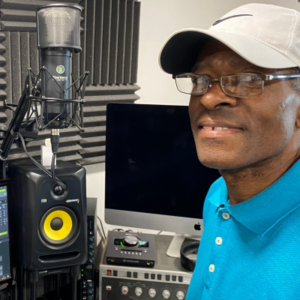Barry Edward Beckett was born in Birmingham, Alabama, in 1943. He first met Jimmy Johnson and Roger Hawkins while he was studying at the University of Alabama in Tuscaloosa in the early sixties. Beckett was self-taught on the piano and could not read music. That did not hinder his aim of working as a musician. One of his first jobs in the music industry was working as a keyboardist in Pensacola, Florida, with the producer “Papa” Don Schroeder. He also played with the Esquires.
Schroeder brought Beckett to FAME Studios to play on a session with James and Bobby Purify in 1966. Hall was suitably impressed and soon offered Beckett a permanent job at his studio. Barry Beckett quickly became one of the unsung maestros of Muscle Shoals, a keyboardist whose subtlety and precision defined countless recordings. He was not a showman in the conventional sense; rather, his artistry lay in shaping atmosphere and mood with an instinctive sense of timing. Every note he played seemed to exist in service of the song, making him one of the most indispensable session players of his era.

Barry Beckett
Beckett’s hallmark was his ability to add depth without crowding a track. On “I’ll Take You There” by the Staple Singers, his restrained organ swells are not immediately noticeable, yet they give the song its Gospel fire. He placed his chords with uncanny precision, lifting Mavis Staples’ vocal just when it needed extra force, then pulling back to allow the rhythm section’s trance-like groove to dominate. This was Beckett’s genius: understanding the emotional architecture of a song and knowing precisely where to apply colour. His piano work was equally distinctive.
On Paul Simon’s “Kodachrome”, Beckett brought clarity and bounce, providing a rhythmic brightness that mirrored the song’s playful optimism. Each chord was placed with exact care, crisp without ever sounding mechanical. He could make the piano dance when required, but always within the boundaries of taste and discipline. This technical precision, combined with an almost spiritual sensitivity to the artist’s intent, gave Beckett a unique position in the studio.
As a session player, Beckett also possessed a producer’s ear. He was a natural arranger, often guiding the shape of a recording through his harmonic choices. His presence in the studio gave artists confidence, because he could anticipate where a song needed weight, texture, or silence. Unlike players who sought the spotlight, Beckett thrived on invisibility; he made his contributions felt rather than heard, embedding them so deeply in the music that they became inseparable from the finished record.
Barry Beckett’s signature style can be described as one of disciplined elegance. Whether on piano or organ, he understood that the truest measure of a musician lies not in how much they play, but in how much they choose not to. His playing was minimal, precise, and deeply human, the kind of work that transforms good songs into timeless ones. In Muscle Shoals, where authenticity was everything, Beckett’s keys spoke with quiet authority, ensuring that his legacy endures as one of subtle mastery and profound musical intelligence.
















